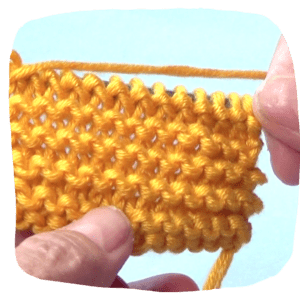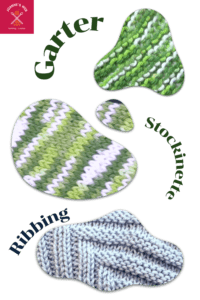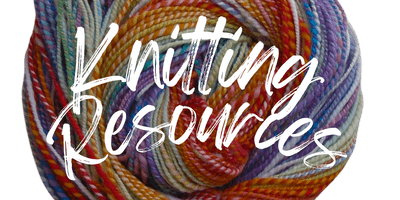Welcome to the wonderful world of knitting! Knitting is a perfect choice if you’re looking for a new hobby, a way to relax, or a means to create beautiful handmade gifts.
In this guide, we’ll cover everything you need to know to get started, from understanding basic knitting terms to creating your first knitting project. Let’s dive in!
This guide includes step-by-step instructions, reference videos, and photos. Also affiliate links to products we love to recommend.
Table of Contents
-
Introduction to Knitting
-
Essential Knitting Supplies
-
Understanding Knitting Terms and Abbreviations
-
Getting Started: Casting On
-
The Basic Knit Stitch
-
The Purl Stitch
-
Combining Stitches: Patterns and Textures
-
Binding Off: Finishing Your Project
-
Troubleshooting Common Knitting Problems
-
Tips for Beginners
-
Next Steps: Expanding Your Skills
-
Conclusion
1. Introduction to Knitting
Knitting is a time-honored craft that involves creating fabric by interlocking strands of yarn with needles. It’s a versatile and creative activity that can produce everything from cozy blankets to stylish sweaters. Learning to knit is not only enjoyable but also a rewarding skill that can last a lifetime. It’s known to be an excellent brain exercise and a great way into meditative practice.
In this post, we will show you how to knit with the English style, the most popular and perhaps easiest way to start knitting.
2. Essential Knitting Supplies
Before you start knitting, you’ll need a few basic supplies:
-
Yarn: Choose a yarn that’s appropriate for beginners, such as a medium-weight acrylic or wool blend yarn. These are easy to work with and come in a variety of colors. Look at the yarn label and for a worsted weight yarn weight, which is the most widely used for beginner projects. You can knit many things with just one ball of yarn to start.
-
Knitting Needles: Beginners typically start with straight knitting needles made of bamboo, metal, or plastic. A Size 8 (5mm) needle size is a good starting point. (our favorite are metal needles, which are the best for beginners).
-
Scissors: A small pair of sharp craft scissors will help you cut yarn neatly.
-
Tapestry Needle: Used for weaving in loose ends and sewing pieces together.
-
Stitch Markers: These small rings help you keep track of your stitches.
We have compiled a quick printable Knitting Supplies List you can download for FREE
3. Understanding Knitting Terms and Abbreviations (click on the blue links to watch each video tutorial)
Knitting has its own language, filled with abbreviations and terms that can seem confusing at first. Here are a few basics to get you started:
-
CO: Cast On
-
BO: Bind Off
-
K: Knit
-
P: Purl
-
St: Stitch
-
RS/WS: Right Side/Wrong Side
4. Getting Started: Casting On
Casting on is the process of creating the initial row of stitches on your needle. Many essential techniques exist, but the Long Tail Cast-On is a popular choice for beginners.
Here’s how to do it:
-
Measure the length of yarn approximately three times the width of your project. This is your yarn tail.
-
Make a slip knot and place it on your needle.
-
Hold the needle in your right hand and the yarn in your left, with the tail over your thumb and the working yarn over your index finger.
-
Insert the needle upward through the loop around your thumb, then catch the yarn from your index finger and pull it through the loop.
Repeat this process until you have the desired number of stitches on your needle.
We are including one of our video tutorials to demonstrate this basic cast-on technique [Video Tutorial].
Side note: there are other cast-on techniques: regular cast-on, stretchy cast-on, etc.
5. The Basic Knitting Stitch
The knit stitch is the foundation of all knitting. Here’s the basic knitting technique:
-
Hold the needle with the cast-on stitches in your left hand.
-
Insert the right needle into the first stitch on the left needle, from front to back.
-
Wrap the yarn around the right needle.
-
Pull the yarn through the stitch, creating a new loop on the right needle.
-
Slip the original stitch off the left needle.
-
Continue knitting each stitch across the row.
[Watch the full tutorial HERE]
6. The Purl Stitch
 The purl stitch is the counterpart to the knit stitch and is used to create different textures and patterns.
The purl stitch is the counterpart to the knit stitch and is used to create different textures and patterns.
Here’s how to purl:
-
Hold the needle with the stitches in your left hand and left index finger
-
Insert the right needle into the first stitch on the left needle, from back to front.
-
Wrap the yarn around the right needle.
-
Pull the yarn through the stitch, creating a new loop on the right needle.
-
Slip the original stitch off the left needle.
[Purl Stitch Video Tutorial]
7. Combining Stitches: Patterns and Textures. 
By combining knit and purl stitches, you can create a variety of patterns and textures. Some common ones include:
-
Garter Stitch: Knit every row for a bumpy texture.
-
Stockinette Stitch: Alternate rows of knit and purl stitches for a smooth fabric.
-
Ribbing: Alternate columns of knit and purl stitches for a stretchy fabric.
8. Binding Off: Finishing Your Project
Binding off is the process of finishing your knitting so it doesn’t unravel. Here’s how to bind off:
-
Knit the first two stitches.
-
Lift the first stitch over the second stitch and off the needle.
-
Knit another stitch and repeat the process until only one stitch remains.
-
Cut the yarn, leaving a tail, and pull it through the last stitch. The loose yarn you can weave between the knitted stitches.
[Bind Off Video Tutorial ]
9. Troubleshooting Common Knitting Problems
Every knitter encounters problems. Here are some common issues and how to fix them:
-
Dropped Stitch: Use a crochet hook to pick up the dropped stitch and place it back on the needle.
-
Tension Issues: Practice and adjust your grip on the yarn to ensure even tension. It all gets better with time.
-
Twisted Stitches: Make sure you’re inserting the needle correctly to avoid twisting stitches.
10. Tips for Beginners
-
Practice Regularly: Consistent practice helps build muscle memory and improve your skills.
-
Start Small: Begin with simple projects like scarves or dishcloths.
-
Join a Knitting Group: Connect with other knitters for support, advice, and inspiration. Ravelry and Knitting Paradise are great online communities and there might be some more in your area.
-
Watch Tutorials: Online videos can provide visual guidance for techniques and stitches.

Knitting Love
11. Next Steps: Expanding Your Skills
Once you’ve mastered the basics, there’s a whole world of knitting to explore:
-
Learn New Basic Stitches: Experiment with cables, lace, and colorwork.
-
Try Different Projects: Move on to hats, socks, and sweaters.
-
Explore Advanced Techniques: Learn how to read patterns, use circular needles, and knit in the round.
-
Try out thicker yarn (bulky weight) or thinner yarn (sport or fingering weight) to experiment and see what look you like the most.
-
Use Craft Store coupons. They are often the best value around.
-
Download any apps on your mobile phone or tablet. These will be really useful, especially for determining gauges or saving interesting patterns.
-
If you feel the English Style is too difficult, try the Continental Knitting Style. It’s best for a more left-dominant hand and also faster for knitting (and by the way, there are other knitting methods, but they can be too complicated in my view).
The Easiest Basic Knitting Projects To Start Knitting
12. Conclusion
This is your knitting journey of creativity and self-expression. As you practice and grow your skills, you’ll discover the joy of making beautiful handmade items that you and others will cherish for years to come. Welcome to the knitting community!
It only takes some quiet time, and a little bit of time investment to learn a new, rewarding skill.
By growing your range of knitting skills you will soon step beyond your beginner knitter comfort zone and feel the confidence to try out other knitting patterns, and more complicated knitting stitches.
NOTE: To help you get familiar with the Most Popular Knitting Terms, we have gathered a great list of the 100 most-searched-for knitting words people look for online.
Now that you’ve been introduced to the Basics Of Knitting, you might want to try a few basic and easy patterns. We have hand-selected our top basic patterns for you to try:
Knitting Patterns For Beginners.
Yarn Weights explained.
Check out our Knitting Glossary Here.
Remember to also download your FREE Knitting Supplies Printable List!
Our Knitting Basics Video Tutorial Playlist is Here as well as all of our Knitting Tutorials on YouTube
Great Knitting Books to consider.
Other suggested articles:
Knitting vs. Crochet
Have additional questions? Feel free to contact us: ana@joannesweb.com
[contact-form][contact-field label=”Name” type=”name” required=”true” /][contact-field label=”Email” type=”email” required=”true” /][contact-field label=”Website” type=”url” /][contact-field label=”Message” type=”textarea” /][/contact-form]



0 Comments